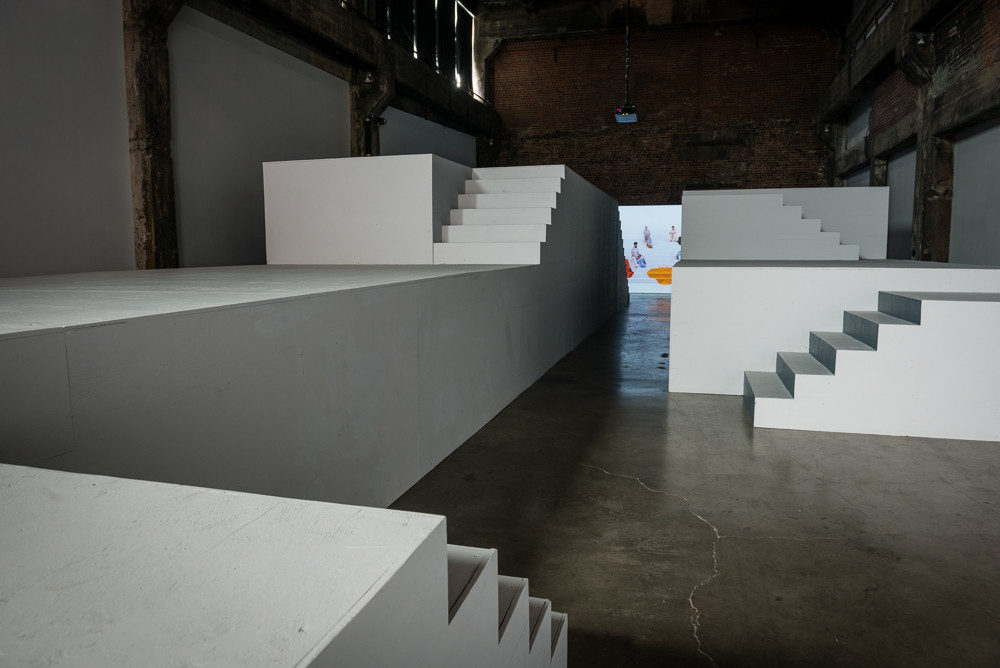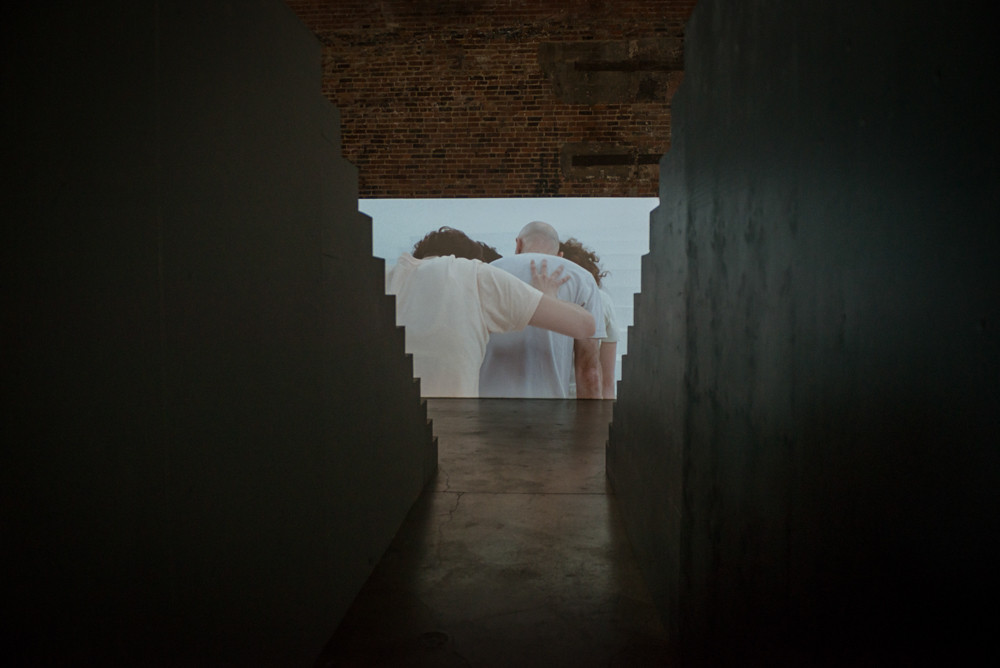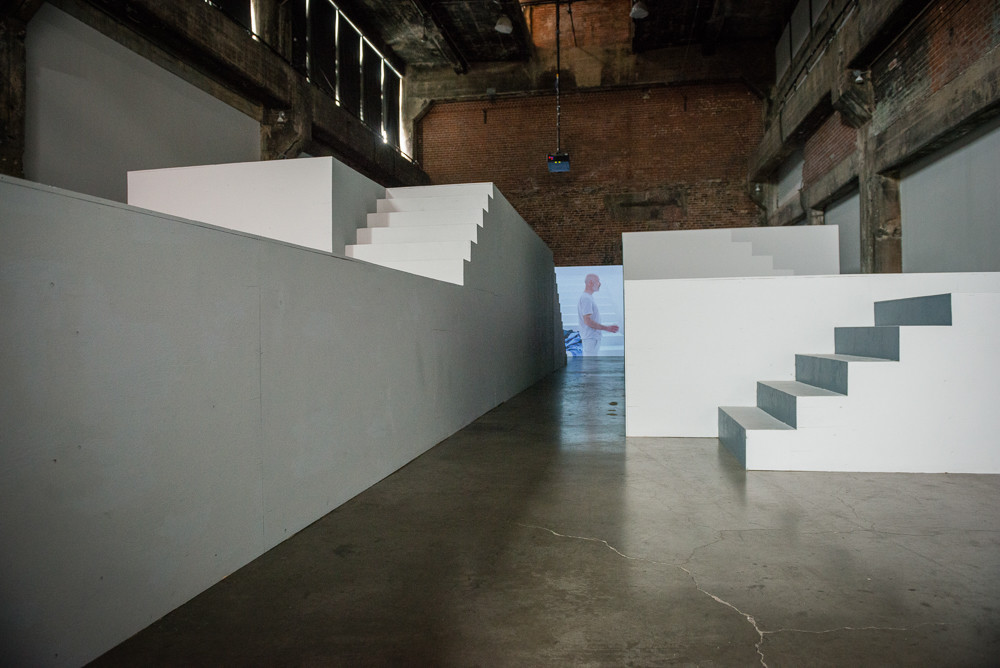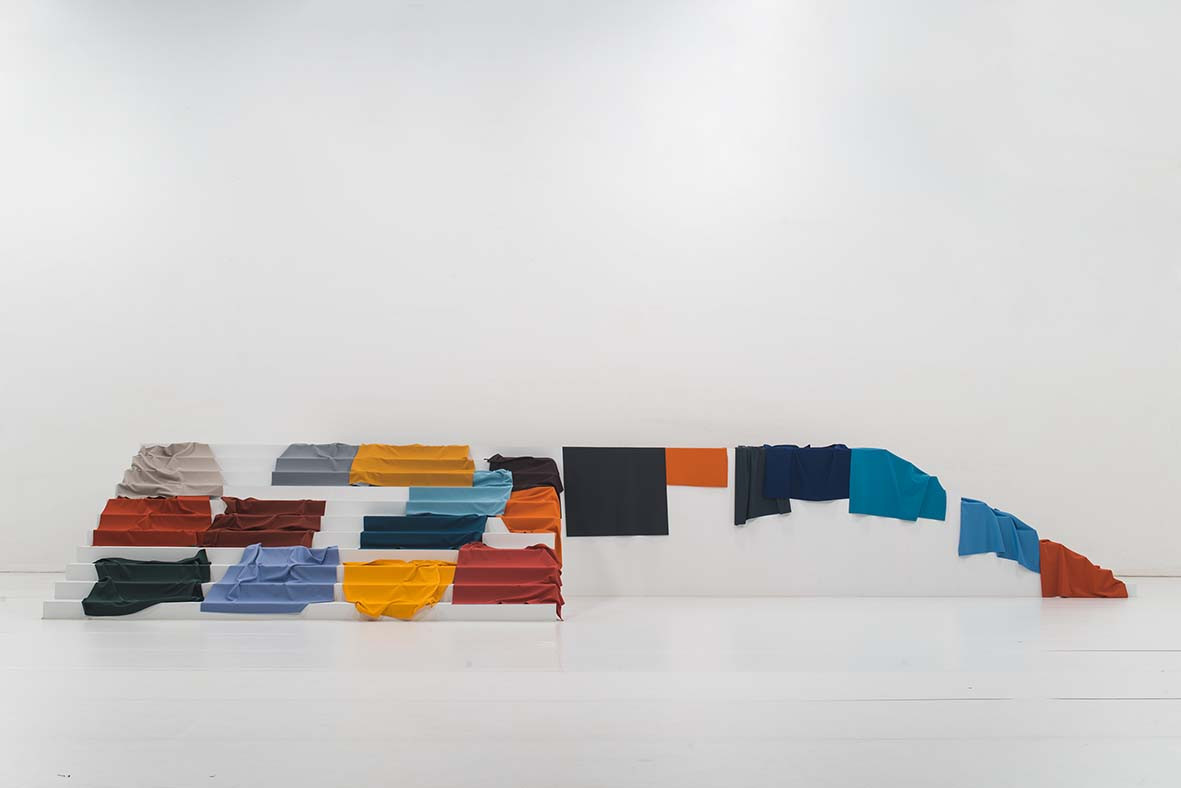



In her work over a number of years, German artist Ulla von Brandenburg has developed a visual art practice in which films, performances, sculptures, installations, books, and drawings exist side by side. The apparatuses she employs in both her films and installations echo those found in the history of theatre and stage design, such as shadow theatre, diorama, tableau vivant, the anatomical theatre, and the place of the stage itself. Her work explores states of consciousness that allow the characters in her films and the public to experience worlds caught between past and present, reality and illusion, the sacred and the secular. As in a theatre, we are transported from one universe to another, switching into play and the loss of our tangible references. In this way, each of her exhibitions and works suggests our inability to seize time and reality, instead preferring the sensitive and immediate experience.
It Has a Golden Orange Sun and an Elderly Blue Moon, Ulla von Brandenburg's first solo exhibition in Canada[1], brings together five recurring themes in her work: colour, ritual, movement, stairs, and textiles. Here, the inspiration around these themes is drawn from the architecture of modern theatre and Adolphe Appia's stage designs, the dances of Rudolf Laban and the Judson Dance Theater, the work on movement by Samuel Beckett, and John Cage's musical constructions on randomness.
The exhibition unfolds in a large installation conceived on site, operating as stage set and sculpture at once, and in a film—two elements that echo one another, like a mirror and its reflection. The spectator is invited to literally become an integral part of the apparatus deployed in the space of the Fonderie Darling; projected into the film, one finds oneself immersed in a physical and aesthetic experience, caught up in the film's images and the scenographic setting. The film It Has a Golden Sun and an Elderly Grey Moon—a title mirroring the title of the exhibition and a play on the various colour versions—takes place on the stage of the Amandiers Theatre in Nanterre (France). This space is structured by two large staircases forming a platform. Made up of different levels, the staircase is a means of architecturally representing hierarchies in space, in the temporal construction, and in the various actions taking place there, which here are embodied by dancers making simple movements and handling coloured pieces of cloth. The staircase acts as a mirror of the place occupied by the spectators, from where they are observing the action of the film; it plays the role of the stage.
The exhibition is also accompanied by a book, It Has a Golden Sun and an Elderly Grey Moon, edited by Alexandra Baudelot. Between a monograph and an artist's book, this publication brings together texts by various authors exploring the five themes of the exhibition, and which are also present in Ulla von Brandenburg's wider work. Published by Mousse, It Has a Golden Sun and an Elderly Grey Moon is funded by the Australian Centre for Contemporary Art (ACCA), Melbourne; The Power Plant Contemporary Art Gallery, Toronto; Aarhus 2017: European Capital of Culture, Denmark; Museum Haus Konstruktiv, Zurich; the Ricard Foundation; and the CNAP, Centre national des arts plastiques, France.
[1] The exhibitionIt Has a Golden Orange Sun and an Elderly Blue Moon at the Fonderie Darling works in tandem with another facet of the exhibition being presented at The Power Plant in Toronto, entitled It Has a Golden Red Sun and an Elderly Green Moon. Taking place simultaneously, these two exhibitions are both independent and complementary, echoing the recurring strategy of mise-en-abyme in Ulla von Brandenburg's practice.
Ulla Von Brandenburg
Ulla von Brandenburg is a German-born artist who lives and works in Paris. For a number of years she has been developing a body of work in which she uses various media and practices: film, architecture, performance, sculpture, installation, publication, and drawing.
From one work to another, she uses recurrent motifs drawn from, among others, the imaginary of the nineteenth century, an era full of images that show, on a single plane, representations of the unconscious in pre-Freudian psychology, occultism, parapsychology, and new image-production techniques.
Von Brandenburg’s work is internationally known. She is one of the four finalists for the Prix Marcel Duchamp, a high distinction in French contemporary art, in 2016.
Curator
Alexandra Baudelot
